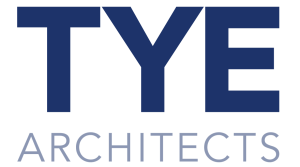*As of 19/12/23, the policy this article refers to has been moved to Paragraph 84e. You can read more about this change over in our dedicated Paragraph 84e article, but the below still applies to the new policy.
Building a home in the countryside represents a taxing but ultimately rewarding venture. These projects have, however, significantly benefited from the introduction and revision of Paragraph 80 – formerly Paragraphs 55 and 79 – of the National Planning Policy Framework (NPPF).
In this guide, we will navigate the complex terrain of Paragraph 80 and aim to provide you with an understanding of both the legislation and the process itself.
What Are Paragraph 80 Houses?
For our purposes, ‘Paragraph 80’ typically refers to a specific policy within the NPPF that sets out a range of circumstances that enable new projects to be carried out in the countryside. Formerly ‘Paragraph 79’ and ‘Paragraph 55’, the legislation was initially introduced in 1997 to ensure that only houses of a distinct quality and environmental standards could be built in certain areas.
Paragraph 80 allows for the construction of new dwellings in rural areas provided the design is of an exceptional quality. Often also referred to as the ‘Country House Exemption Clause’, it ensures that these pioneering, original designs are given the green light. The design’s quality and originality must be demonstrable during the proposal stage, and this is then reviewed by an independent panel.
To qualify for Paragraph 80, the proposed dwelling must meet specific criteria related to architectural excellence, landscape design, and sustainability. Much of the legislation’s intention is to encourage innovation, enough so that it positively contributes to its environment.
Anyone seeking to construct a new dwelling under the Paragraph 80 clause needs to demonstrate how their design meets the policy’s requirements. This may include but is not limited to considerations of the site’s ecological impact, the use of local materials, and the overall aesthetic contribution to the surrounding landscape.
Understanding the Criteria
Below, we have highlighted some of the specific criteria that must be met by any Paragraph 80 house. Initially, when the policy was still known as ‘Paragraph 55’, the guidance was relatively vague:
‘Such a design should:
-
be truly outstanding or innovative, helping to raise the standards of design more generally in rural areas.
-
reflect the highest standards in architecture.
-
significantly enhance its immediate setting.
-
and be sensitive to the defining characteristics of the local area’.
Following revisions to the NPPF back in 2018, the relevant information could instead be found in Paragraph 79. A few alterations to our previous had been made, but the guidance remained consistent with previous understanding:
-
Planning policies and decisions should avoid the development of isolated homes in the countryside unless one or more of the following circumstances apply:
-
e) the design is of exceptional quality, in that it:
- is truly outstanding or innovative, reflecting the highest standards in architecture, and would help to raise standards of design more generally in rural areas; and
- would significantly enhance its immediate setting, and be sensitive to the defining characteristics of the local area.
As you can see, the criteria themselves remained largely unchanged, save for their location within the NPPF. Arguably the most significant alteration came more recently, in 2021, when the policy was moved once again to Paragraph 80:
-
e) the design is of exceptional quality, in that it:
- is truly outstanding, reflecting the highest standards in architecture, and would help to raise standards of design more generally in rural areas; and
- would significantly enhance its immediate setting, and be sensitive to the defining characteristics of the local area.
Significantly, the emphasis on highlighting ‘innovation’ was dropped. This change came as a welcome relief to many designers and planning officers, to whom the ‘innovative’ caveat had caused a lot of confusion over the years. Such an ill-defined prerequisite had even caused the panel itself to question their own understanding of the policy, leading to a few inconsistencies.
We have now reached a point as an architectural firm where we feel extremely confident in our ability to fully understand this policy, and to guide anyone looking to comply with it. While some do still struggle to comprehend it properly, our experience and expertise continues to shine through for all of our clients who are interested in new country dwellings.
Build Your Dream Paragraph 80 House Anywhere In The UK
From Milton Keynes to Manchester, Brighton to Glasgow, Birmingham to Cardiff, Tye Architects are a nationally recognised architects who specialise in bringing Paragraph 80 Houses to life. While the Paragraph 80 planning process may be complicated, with the right team around you nothing is impossible. Our philosophy is simple: complicated problems result in impressive solutions. This ethos drives us to create some of the most original, inventive, and experimental Paragraph 80 Houses in the UK, with unprecedented solutions to common barriers that local authorities put in front of Paragraph 80 houses.
Tye Architects: Specialists in Paragraph 80 Houses
Paragraph 80 demands a lot of work, both during the initial design stage and the proposal submission. It sets a high bar, and rightly so. Here at Tye Architects, we take immense pride in our thoughtful approach to all Paragraph 80 projects, leaving no stone unturned as we seek to construct a truly original dwelling.
By choosing Tye Architects to bring your Paragraph 80 House to life, you are not only choosing one of the most respected architects in the industry, but are also drawing on the wealth of talent we have around us, from rural landscape experts to construction specialists and legal professionals. For more examples of our Paragraph 80 house projects, you can view our portfolio below.
To contact our team today, please call us on 01525 406677 or fill out one of our online contact forms.

